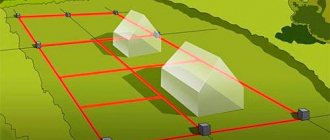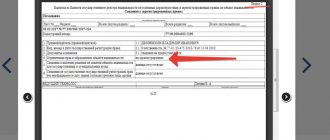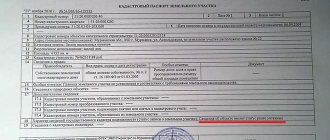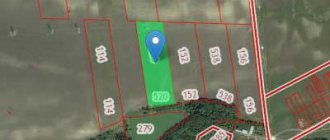Despite the use of all kinds of computer programs and the unification of systems for recording and analyzing information for use in various state, public, socio-political processes, the bureaucratic system was and remains quite clumsy and unmaneuverable.
With the seeming total informatization and widespread accounting, there was and remains a huge amount of papers of various purposes and properties.
Special provisions
Perhaps the most troublesome and time-consuming are the methods of conducting certain transactions with real estate. Procedures for collecting documents that are needed for state registration, official acts, such as the sale of a house, cottage, apartment or part thereof.
If everything is carried out by an experienced specialist, it will take much less time than doing everything yourself. But in life a variety of situations can arise. Today there is a fairly large category of the population who can be called thrifty and thrifty.
For these our fellow citizens, all the details and the very technique for collecting the necessary package of documentation should be accurately and completely outlined. First of all, such an important act in the field of land law - the cadastral passport - is of great importance.
Despite the fact that today it is needed in almost every transaction for the purchase and sale of real estate, and cadastral documents are heard by everyone, not everyone is even approximately familiar with its features.
It is registered with the state in the Land Cadastre of the Russian Federation as a real estate object and has the following features:
- Each of the plots, regardless of what area it has
- In what region is the plot located?
- What zoning does it follow in the Register?
- Has its own special account number.
- A set of generally accepted data, which are added to the state cadastre at different times, can be provided to each citizen or legal entity in accordance with the request of the cadastral registration authority.
- Information by law must be provided for no more than five work shifts after submitting and registering an application with the cadastral registration authorities.
In addition to the fact that this is a reference document that has a state format and is approved as one of the main acts that allows for certain transactions with real estate located on land plots of various sizes and quality qualifications.
In order to carry out manipulations in the legal field and legally legitimate, you should remember what information is contained in the cadastral extract.
Recommendations by item
Each item in the cadastral passport must reflect basic information about the allotment.
There are several sections in which information is indicated in accordance with legislative norms:
- After the colon, the cadastral number is indicated. Older documents use hyphens instead.
- Numbering is used when it is impossible to place the form on one sheet.
- The total number of pages of the document must be noted.
- If the plot previously had cadastral numbers (for example, before the division of the territory), information about this is noted.
- The document contains the date the site was registered with the state. This usually coincides with the time the certificate of title is issued.
- For territories, the exact address or location is specified.
- An important point is the category of the site. It affects the cadastral valuation, after which taxes paid may increase.
- You also need to pay attention to the permitted use. Territories must be used strictly in accordance with their intended purpose.
- If property disputes arise, you need to focus on the clause on actual use.
- In the absence of land surveying, the exact area of the allotment is indicated. If the boundaries are defined, the calculation is based on these data.
- The cadastral price affects the amount of tax. The cost of one square meter is also stated here.
- A point with a coordinate system has been developed for surveyors.
- The section with rights to the allotment reflects information about the owner, the grounds for use and the type of right.
- Special information is noted in separate paragraphs. This indicates whether land surveying has been carried out.
- Information on the division, merger, creation and liquidation of a land plot is located separately.
- At the end of the passport, the personal data and position of the person who issued the document are noted. His signature and the seal of the organization are placed next to it.
This is important to know: Making a note of gratitude to an employee in the work book: procedure for registration and sample document
Information about the plot in the cadastral passport
A cadastral land passport is a unified system document that contains the entire volume of information necessary for certain operations.
Sooner or later, almost every one of our compatriots has to deal with certain issues in relation to real estate. This may be a gift, inheritance, acquisition, purchase or collateral to obtain a loan or attract a mortgage. All these situations are different, but they all have one common, but very important and significant position - Passport for a land plot .
Its five sections contain the following data:
- Section B1 contains information of a general nature, as well as data on the exact address, unique cadastral number, cadastral value, area of the plot, type of land and legally permitted use or purpose, owner rights and demarcation boundaries, date of entry of the real estate number in the state cadastre.
- Section B2 consists of a drawing plan and a localization diagram at a given scale with mandatory explication.
- Section B3 contains information about the encumbrance of the land plot and ownership, provided that there are any.
- Part B4 with a description of the boundary of the site, clarification of angles and exact dimensions.
- Section B5 clarifies the turning points on the boundaries and perimeter of the site.
Taken together, all this data provides complete information about how valuable the plot on which the property of interest is located is.
What does a cadastral passport for a land plot look like?
Various civil transactions can be carried out in relation to a land plot. Their implementation requires a complete package of documents.
The central place in the set is occupied by the cadastral passport. It is a required document. Therefore, such paper is issued for each site.
In order to find out what a sample cadastral passport for a land plot looks like in 2020, you need to refer to the legislative norms.
After all, the form of the document is regulated at the federal level. The authorities have no right to make changes to it. It is worth familiarizing yourself with the procedure for displaying information in the allotment passport.
This is important to know: Sample of a collective complaint against neighbors: features
Why do you need a cadastral passport for a land plot?
The need for this document may arise in a variety of situations. It may be necessary in the event of the following manipulations and transactions.
That is, the KPZU is part of the following package of documents, without which it is almost impossible to complete:
- Purchase and sale of land or a house built on it, buildings located on the site.
- Registration of a plot of property, that is, a land purchase transaction.
- Donation, acceptance as a gift or exchange of a plot, as well as any buildings located on the square.
- Construction of a house or garage on a plot of land.
- Providing land as collateral.
- Inheritance of real estate and recourse to court.
- Insurance procedure with an insurance company and registration of land lease.
- Carrying out bankruptcy proceedings or using a land plot as authorized capital.
Without this document confirming a set of data on the land allotment, it is not legalized by public utilities, the passport office and the tax authorities. When a natural disaster or technical accident occurs, the owner faces the lack of a government support program.
Why was a cadastral passport for land needed?
- For the purchase and sale of land or a house located on the site;
- register ownership of the plot, namely, purchase of the land;
- give, accept as a gift or exchange a plot. Also any building located on the site;
- build a house or garage on a plot of land;
- mortgage a plot of land;
- inherit real estate;
- go to court;
- insure with an insurance company;
- arrange a land lease;
- carry out bankruptcy proceedings;
- use the land plot as authorized capital.
Without a cadastral passport certifying the entry of data about a plot into the Register, it remains invisible to utility services, the passport office and tax authorities; in the event of a natural disaster or technical accident, the owner may be left without government support. Even if he owns a plot of land, the owner will not be able to prove his rights to the property to those who doubt them without a cadastral passport.
How to obtain a cadastral passport for a land plot?
Obtaining this important document is also associated with certain features. It can be ordered and received by any adult citizen of Russia for a land plot located within the territorial boundaries of the Russian Federation.
Today, there is a legally required registration, change of credentials or its complete absence. In the second case, it is necessary to legalize it as soon as possible.
In this case, you must follow a certain order:
- The first stage is to contact the Federal Cadastral Chamber or its Multifunctional Center and fill out a state-issued application. After which the applicant pays 200 or 600 rubles of state duty, presents his passport, the original and a copy of the check or receipt. Filling out and signing the application requires the need to correctly indicate the full address details of the site.
- At the next stage, registrars issue receipts for the information provided, retrieved from Rosreestr, which indicates the time frame for the production of the KPZU. The legally stipulated period for receiving an extract is quite short, literally a few days. If you need to urgently obtain a passport, you can order it on the official website online, where professional legal consultants will work with it.
- The final point is to receive the document on a strictly determined day based on presentation of the passport and the previously received receipt from the registrar.
How to obtain a cadastral passport
Now, instead of cadastral passports, owners of real estate receive extracts from the Unified State Register of Real Estate. The same extracts confirm ownership of the registered objects. Cadastral engineers of the Academy of Sciences "Istrariel" formulate boundary plans of land plots, technical plans of construction projects and inspection reports of liquidated structures, on the basis of which Rosreestr keeps records of real estate. We provide these services both separately and in combination with a guarantee of results: we register, deregister, make changes, correct cadastral errors and provide extracts from the Unified State Register.
Methods for obtaining a cadastral passport for a land plot
It can be sent in the following ways:
- By traditional mail with notification of receipt and a list of enclosed documents.
- When visiting the Federal Cadastral Chamber in person and submitting documents to the registrar.
- Via the Internet in real time.
If there are several co-owners, then upon presentation of a passport they all take their documents. The representative of the parties additionally requires a general power of attorney.

What is included in the cadastral passport for a land plot
The cadastral passport contains basic information and characteristics of the property. For a plot of land, it consists of several sections called forms. Each of them contains certain information.
Each form is on a separate sheet (or several if necessary). The number and date of filling out the passport are written down at the top of the page. The lower part indicates the position, surname and initials of the person who filled out the template. His signature is also included.
The first form is mandatory. And the rest are filled out only when the relevant information is available. If additional data is received, the passport can be supplemented.
Each section is filled out on a prescribed form. The data is written to a table. Let's take a closer look at what they contain.
The following information is entered in the cell:
- site number (and previous ones, if any);
- number of sheets;
- rights information;
- date of registration;
- location;
- if there are buildings - information about them (cadastral numbers);
- land area;
- category of land;
- type of use (permitted and actual);
- cadastral value;
- data about the site from which the given one is formed (or which are formed from it).
It contains a plan of the land plot (to be filled in during land surveying). A mark is placed on the scale and information about the symbols used is entered.
This is important to know: Order for an apartment: what is it, a sample, where is it stored, what to do if it’s lost, how to restore it?
It is intended for information about parts of the site:
- number;
- square;
- in whose favor the encumbrance is established;
- other characteristics.
If they are not highlighted, the form is not filled out.
Section B4
It contains a plan of parts of the site. Fill out in the same way as section B2.
Refusal to issue a cadastral passport for a land plot
Application for KPZU may be refused in the following cases:
- Land withdrawn from circulation, reserved for state needs, placed under a ban for privatization, belongs to the water or forest background, circulation by an improper person, and also provided that the land is not real estate.
- The applicant is not the owner, there is no passage or approach to the site, no easement has been established.
- The site is located in the area where the territory of a government institution intersects, the borders of a populated area, and goes beyond the established limits.
- Areas of different categories of purposes are combined.
- The GKN contains a different amount of data about the site. The error in area is no more than 10% of the total area.
What does an example of a cadastral passport for a land plot look like?
Previously, the document was presented on two A4 sheets. It contained on one page the main characteristics of the property, and on the second - a diagram of the allotment. In this case, the second sheet was mandatory to fill out.
Among the differences between the document and others, two points can be highlighted. The first of these is a reflection of the category of land allotment. The territory can be used for agriculture, industrial purposes, or attached to a populated area.
If there is no category, further changes to the document are allowed. When the address is established, appropriate notes are made.
The second block is the type of permitted use. If the land is part of a settlement, it is intended only for housing construction and small-scale farming.
Currently, the extract presented from the cadastre has an expanded version. The document consists of four sections with unique graphic, information and technical characteristics.









